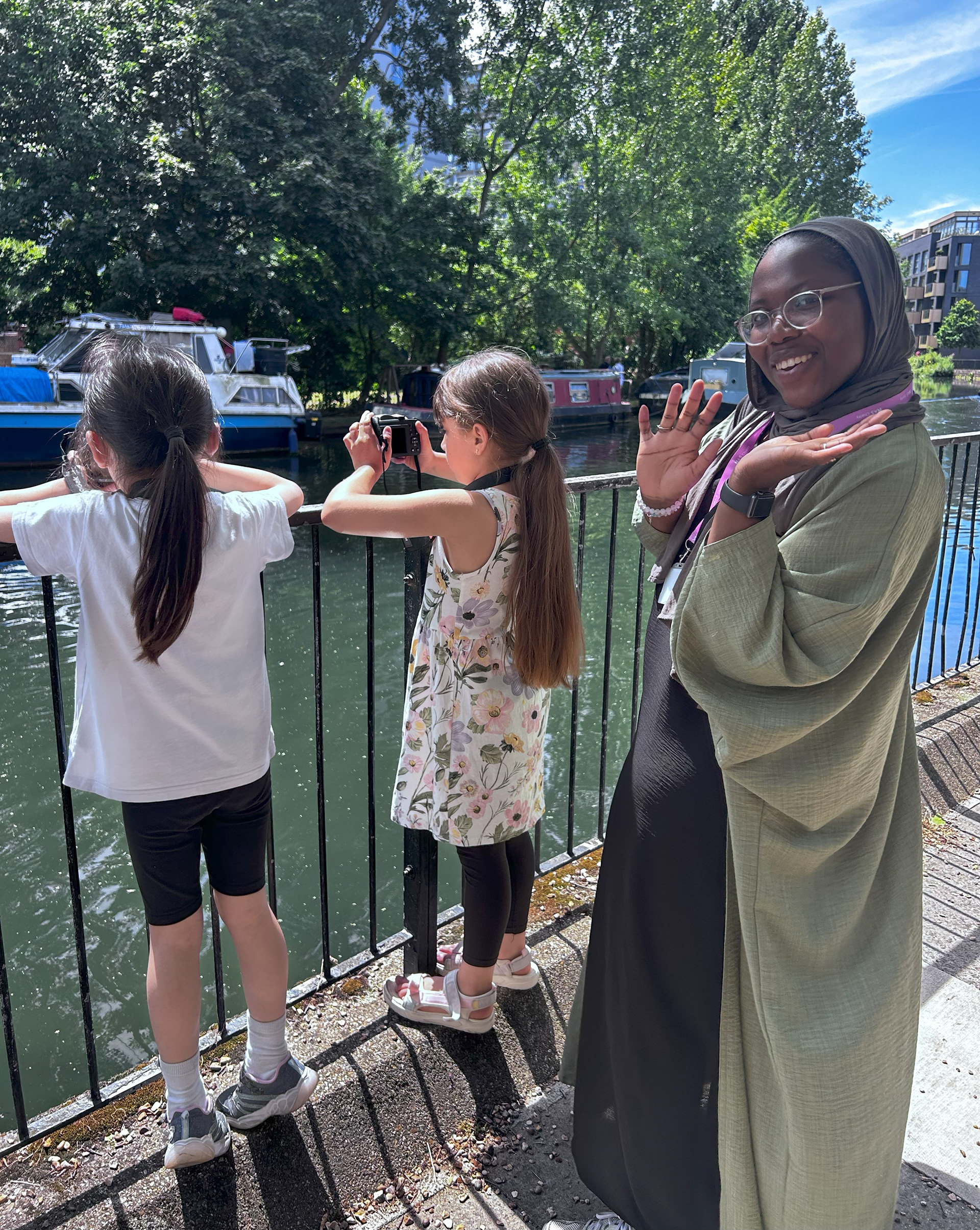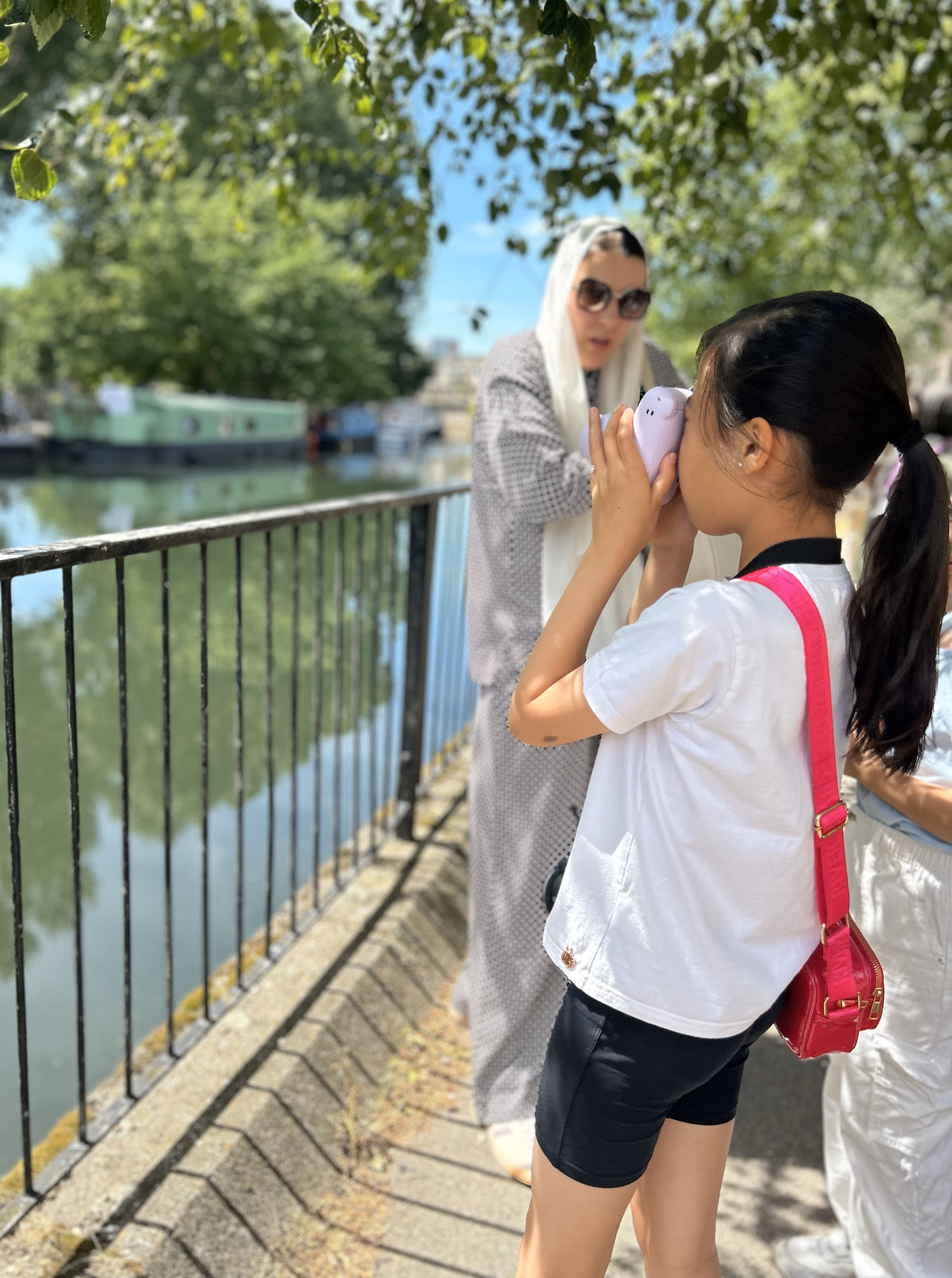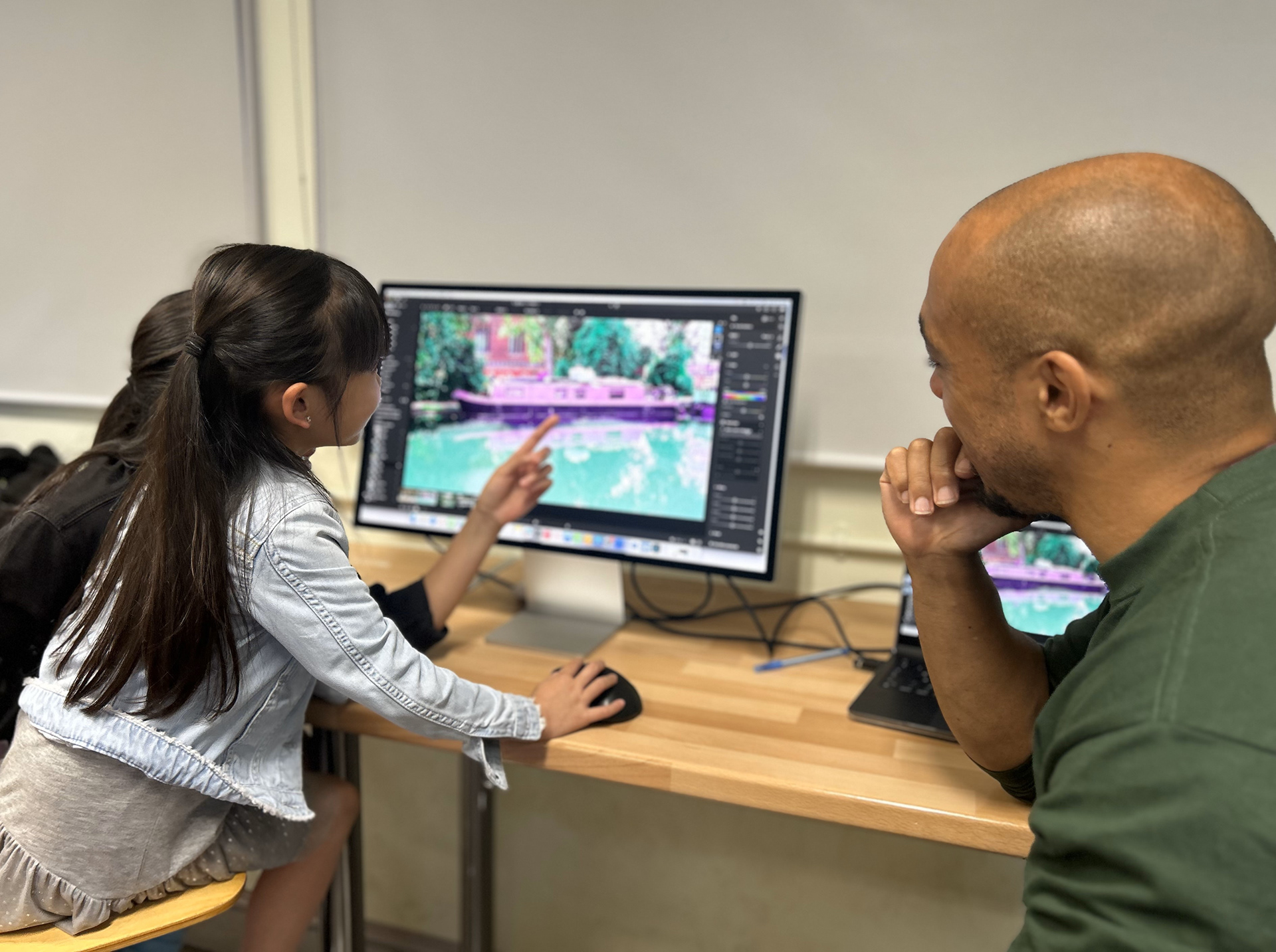Following the success of the Church Street photography project, NAS Group commisioned another project. This time the focus was on Westminster Canals, specifically Little Venice area. While distinct from the Church Street project, this series of photography workshops still formed part of the NAS Group's wider public health and heritage project.
Fig.1
Project Brief
For this project, the workshops would be spread over two weeks, aimed at 8 - 12 year olds of all abilities (no prior experience was required). The participants would also learn post production techniques using professional software in addition learning practical photography skills. This project will culminate in the final "Health & Heritage" exhibition held at The Grand Junction by NAS Group in August 2024.
Additional sessions were included for ideation, planning, curation and also a production day to set up the exhibition, and a private view to celebrate the participants of the project, and foster community engagement.

Fig.2
Methodology
Considering the project objectives, I used a blended participatory approach. The participants were shown a "hands on" approach to the technical aspects of photography through a range of cameras. This included medium format cameras almost 100 years, SLR film cameras and modern digital cameras (which there were to use).
The participants were shown how to curate images, so that they could put together a photo essay (a collection of images that work together to tell a story). We discussed how stories are constructed and themes that can arise (Fig.1 / Fig. 2). Participants then connected that to how they would approach taking images on their photowalk.
The first week consisted of the photowalk and taking the images. In the following week, we split the day into two session, one group in the morning, and another in the early afternoon. This was in part due to availability of resources, but to also ensure better quality learning while learning the adobe software. This session was very much "learn by doing", and the participants selected their favourite images, and edited one image to their liking.



Reflections
The editing session using the adobe software was a welcome addition. For some of the young people they had never used a computer before, and for many, while they may have used filters for phone images, they hadn't used the pro-grade software. So giving them access to opportunities they wouldn't necessarily have, not only fit in line with NAS Group and my own ethos, but was personally rewarding.
After the success of the Church Street project, this time we decided to have a booking system, and while we were oversubscribed on paper, there were "no shows" on the day. Luckily, as this project was based at Maida Vale library, as the session began parents approached us to sign their child up. This is a benefit of the workshops being held in community orientated spaces. In addition, we invited parents to attend parts of the workshop, which overall worked well.
As this project was based around the canals, participants benefited from access to green spaces, as well as learning practical skills in photography, and learning to express themselve artistically through visual means.
The final exhibition for the project at The Grand Junction has yet to take place, but will update futher once the wider project and evaluation is complete.



Update
Since 2024 this project and organisation has evolved. NAS Charity has now become CAYR - a national charity working across the UK, building partnerships and using an Asset-Based Community Development (ABCD) approach. The heritage projected encompassed several different projects that was to be called "A Common London Story". You can find the details of the report and outcomes over on the CAYR website [HERE]